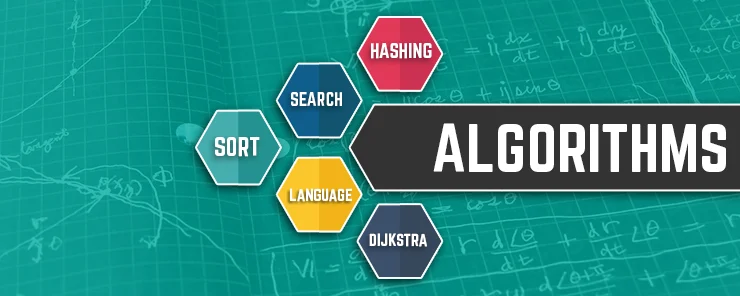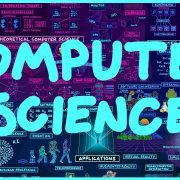Algorithm: A Journey of Logic and Efficiency
/2 Comments/in Algorithms, Computer Science /by Erhan KılıçIn the complex fabric of modern technology, algorithms are the invisible weavers who transform chaos into order. They are the intellectual architects behind the functionality we frequently use in our digital lives, from search engines to recommendation systems. In this article, we'll embark on a fascinating journey to unravel the mysteries of algorithms and explore their different types. I'll illuminate their inner workings with creative examples. I'll make this topic understandable for you with examples from my own experience. If you're ready, let's get started!
Understanding the Essence of Algorithms
Imagine a chef preparing a magnificent feast. Each course consists of a series of steps that contribute to the final product. Similarly, a algorithmA method is a carefully designed set of instructions to solve a specific problem or achieve a goal. The term "algorithm" is used in Turkish in the same way as in English and is well-established in the literature. Just as a recipe guides a chef, an algorithm guides a computer in performing tasks.
Example 1: Sorting a Deck of Cards
Let's start with a classic example: sorting a deck of cards. Imagine you want to arrange a shuffled deck in ascending order. A simple algorithm is Bubble Sort (Bubble Sort) does this like this:
- Start with the first two cards.
- Compare and swap if in wrong order.
- Move on to the next pair of cards and repeat the comparison/swapping.
- Continue until displacement is no longer required.
Bubble Sort "bubbles" the largest card to its correct position. While intuitive, it's not very efficient with large decks. In one project, I used Bubble Sort to sort a small dataset, but switched to faster algorithms as the data grew.
Performance Matters
Efficiency is at the heart of algorithms. Just as the harmony of a symphony depends on every instrument playing perfectly, the performance of an algorithm depends on its execution time and resource usage. Here it is. Big O Notation This is where “Big O Notation” comes in. In Turkish, “Big O Notation” is a standard term and defines the upper bound of the algorithm’s performance.
Simply put, Big O Notation helps us understand how the execution time of an algorithm grows with the input size. It categorizes algorithms into categories like "fixed," "linear," "logarithmic," and "quadratic."
Example 2: Searching the Phone Book
Imagine looking for a name in a phone book. Checking every name from beginning to end, Linear Searchand in the worst case it requires 1000 comparisons for 1000 names. However, if the directory is sorted by names, Binary Search You can use Binary Search. This algorithm halves the search range at each step. For example, when searching for a name, you can instantly eliminate half of the remaining names. The time complexity of Binary Search O(log n); even if the input is doubled, the number of steps only increases by one. In a database project, I got fast results on sorted data with Binary Search!
Diversity in Problem Solving
The world of algorithms isn't a uniform landscape; it's a vibrant tapestry of different problem-solving approaches. Let's explore a few types of algorithms.
1. Sorting Algorithms: Merge Sort and Quick Sort
Going back to the ranking, Merge Sort (Merge Sort) and Quick Sort Quick Sort uses a "divide and conquer" approach. Merge Sort divides the deck into smaller subdecks, sorts them, and combines them. Quick Sort selects a "pivot" card, arranges the other cards around the pivot, and sorts the subdecks recursively.
2. Graph Algorithms: Dijkstra Algorithm and Depth-First Search
Imagine you're planning a road trip and want to find the shortest route between two cities. Dijkstra Algorithm, finds the shortest path on a weighted graph. On the other hand, Depth-First Search (Depth-First Search) is like exploring a maze; explore a branch to the end, then return. In a social network analysis, I found the shortest links with Dijkstra, and the results were fantastic!
3. Genetic Algorithms
Let's delve into more interesting territory: Genetic AlgorithmsInspired by natural selection, these algorithms evolve solutions over generations. For example, for a bridge design, they might test different designs, eliminating weaker ones and combining stronger elements to create a better one.
4. Dynamic Programming
Imagine climbing a staircase and taking it one or two steps at a time. How many different ways can you reach the top? Dynamic ProgrammingIt breaks a complex problem into smaller subproblems and prevents repetitive computations by storing the solutions. In the staircase example, you solve a few rungs first and work your way up.
5. Machine Learning Algorithms: Decision Trees and Neural Networks
In the world of machine learning, Decision Trees It is similar to the 20 questions game; it classifies data with yes-no questions. Neural Networks It mimics neurons in the human brain and learns tasks like image recognition or language translation. In an image recognition project, I achieved incredible results using a Neural Network!
6. Greedy Algorithms
Imagine you are a coin collector and you are trying to choose the highest value coins from a limited set. Greedy AlgorithmsAt each step, it makes the best choice locally and hopes for the best outcome globally. In Turkish, "greedy algorithms" is a standard term.
The Social Impact of Algorithms
As algorithms become more integrated into our lives, questions of ethics and bias arise. Even if algorithms are unbiased, they can inherit biases from their training data. For example, if a job applicant screening algorithm has been trained on data with a history of gender bias, it may favor female candidates over male candidates. This isn't the algorithm's fault, but rather a reflection of societal biases in the data. Addressing biases during algorithm development and conducting regular audits is critical for a fair digital world.
Example 3: Facial Recognition and Privacy
Consider facial recognition technology for security. While useful, it raises privacy and surveillance concerns. If used incorrectly or with bias, it can infringe on individual rights. Striking a balance between technological advancement and ethics is crucial for a just society.
Evolution of Algorithms
As technology advances, algorithms evolve as well. Future algorithms may leverage the power of quantum computing or the depths of artificial intelligence. The pursuit of efficiency is fueled by the desire to solve complex problems elegantly and quickly.
Conclusion
Algorithms are the threads that weave together the fabric of our digital world. They dance to the rhythm of logic, diversify with problem-solving techniques, and have the potential to shape society. Understanding algorithms is like unraveling a rich tapestry; each thread brings us one step closer to computational enlightenment. For your next digital payment or personalized recommendations, take a moment to thank the algorithms that silently orchestrate the symphony of modern technology.
What projects have you worked on with algorithms? Did you have an interesting experience? Share it in the comments, and let's discuss it together! For more algorithm tips, check out my blog or contact me!
Notes
- Turkish Equivalents of Terms:
- Algorithm: Established, correct and widespread in Turkish.
- Big O Notation (Big O Notation), Bubble Sort (Bubble Sort), Binary Search (Binary Search), Merge Sort (Merge Sort), Quick Sort (Quick Sort), Dijkstra Algorithm, Depth-First Search (Depth-First Search), Genetic Algorithms, Dynamic Programming, Decision Trees, Neural Networks, Greedy Algorithms: Standard in the algorithm literature.








[…] An algorithm is a step-by-step description of a problem's solution. However, computers cannot reason like humans; every detail must be specified. This is the most misunderstood part of computer science fundamentals. People think an algorithm is simple, but they forget that the person you're dealing with is a "dumb" machine. […]
[…] In the burgeoning field of artificial intelligence and machine learning, neural networks have emerged as one of the most powerful and versatile algorithms. Inspired by the human brain, these networks are used in image recognition and […]